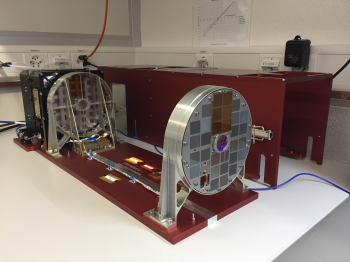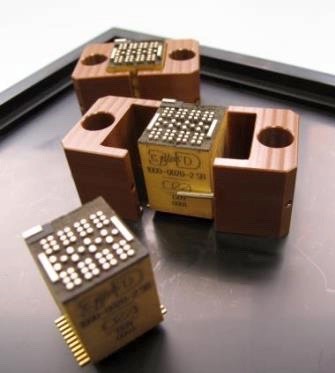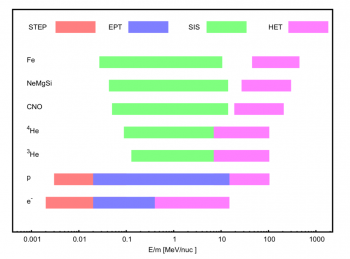STIX
The CEA is involved in the development of the focal plane of the STIX instrument, designed to understand the dynamics and physics of particle acceleration in solar flares. It will look directly at the Sun and detect X-rays from 4 to 150 keV.
The STIX instrument will capture X)-ray images in a field of view of 2°, which means that the entire Sun will be observed even at the perihelion time. The spatial resolution can reach 7 arc seconds, which corresponds to 1400 km on the Sun at perihelion (0.28 AU) and 3600 km for higher latitude observation windows where the satellite will be further from the Sun (0.71 AU).
The mission of the CEA is to provide the detectors that will record the photons and accurately measure their energy. It consists of 32 CdTe based Caliste-SO 3D detectors, capable of withstanding the space environment's extreme conditions.
EPD/STEP
The EPD (Energetic Particle Detector) instrument detects solar energy particles. This instrument is actually composed of a series of 4 instruments:
- STEP (SupraTherrmal Electron and Proton sensor)
- SIS (Suprathermal Ion Spectrograph)
- EPT (Electron-Proton Telescope)
- HET (High Energy Telescope)
EPD is therefore sensitive in a wide energy range, from suprathermic electrons to low-energy galactic cosmic rays.
The CEA is involved in the STEP instrument, designed to measure protons and electrons at very low energy. We are in charge of supplying ASICs, which read silicon diode arrays manufactured at LBNL (Berkeley).



